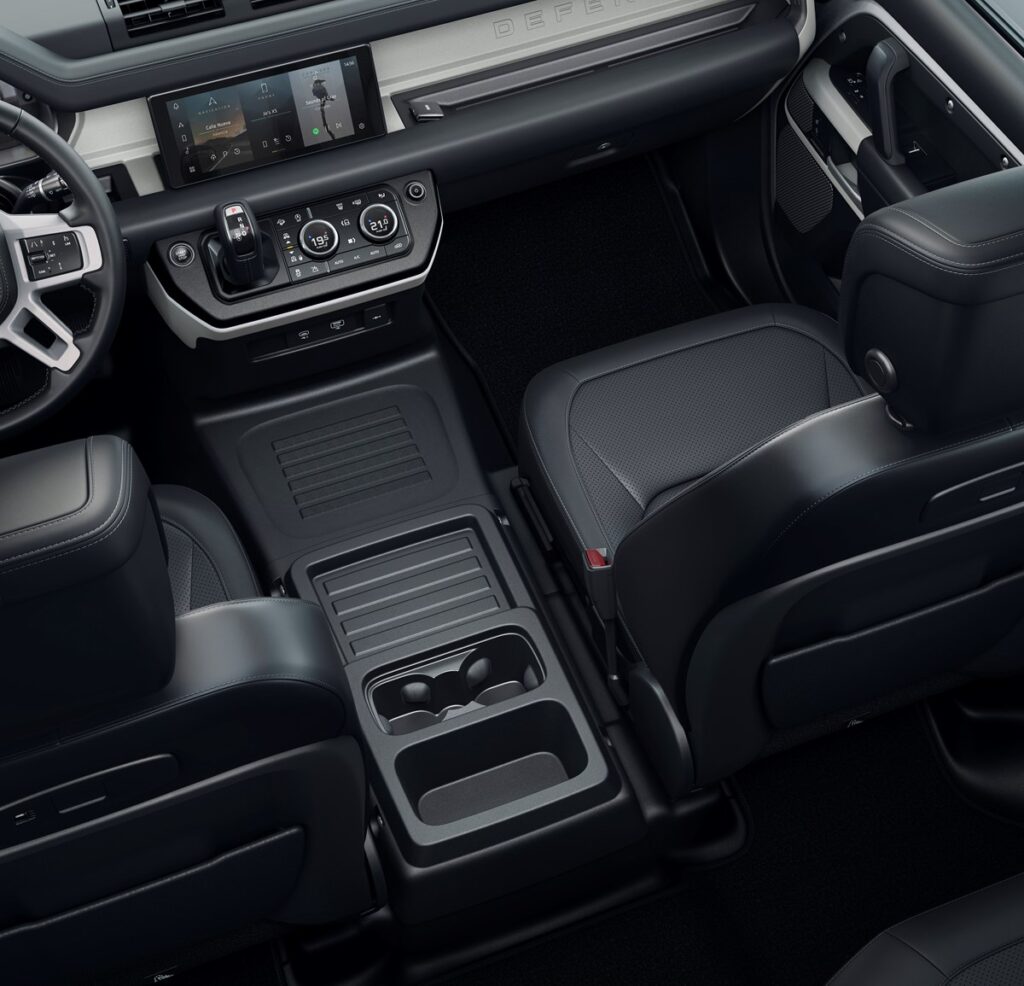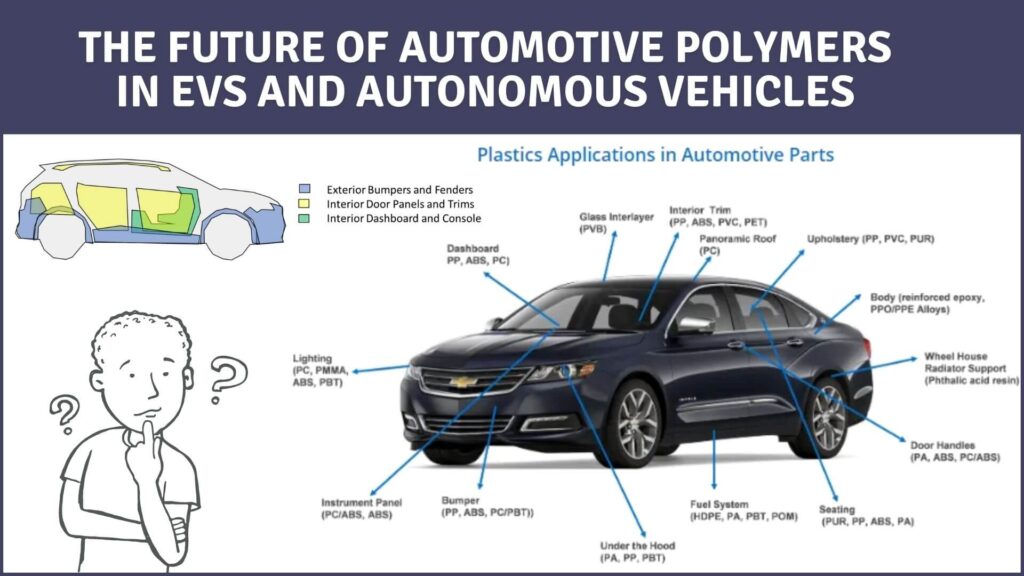

The automotive industry is constantly evolving, with engineers and manufacturers relentlessly pursuing innovation to create vehicles that are safer, more fuel-efficient, and environmentally friendly. In this quest for excellence, materials play a pivotal role, and one polymer that has made a significant impact in automotive engineering is Polypropylene (PP). This versatile plastic has found its way into various components and applications within vehicles, where its unique combination of strength, durability, and efficiency has reshaped the automotive landscape.
Table of Contents
Polypropylene, a thermoplastic polymer, was first synthesized in the 1950s, and its popularity in the automotive industry has grown steadily since then. PP has several attributes that make it an ideal choice for automotive applications –
1. Lightweight yet Strong: PP is lightweight, making it an attractive choice for components where weight reduction is crucial for fuel efficiency. Despite its low density, PP exhibits remarkable strength, making it suitable for both structural and non-structural parts.
2. Chemical Resistance: PP is highly resistant to chemicals, including automotive fluids like oils and fuels. This property ensures the longevity and reliability of PP components in the harsh automotive environment.
3. Impact Resistance: PP’s ability to absorb impact energy makes it valuable for parts that require protection against collisions, such as bumpers.
4. Recyclability: The automotive industry is increasingly focused on sustainability, and PP’s recyclability aligns with this goal. Recycled PP can be used to create new automotive components, reducing the industry’s environmental footprint.

2. Interior Components
3. Underbody Shields
4. Interior Fabrics
5. Fuel Tanks
6. Air Intake Manifolds
7. Battery Cases
8. Exterior Trims
9. Noise, Vibration, and Harshness (NVH) Components

Sustainability is a core concern in the automotive industry, and PP aligns with this focus in several ways –
1. Lightweighting: PP’s low density contributes to the vehicle’s lightweight, which is essential for improving fuel efficiency and reducing emissions. Lighter vehicles require less fuel to operate and produce fewer greenhouse gas emissions.
2. Recyclability: PP is recyclable, and automotive manufacturers are increasingly incorporating recycled PP into their production processes. This reduces the demand for virgin PP and minimizes waste.
3. Fuel Efficiency: As a lightweight material, PP contributes to better fuel efficiency, particularly in internal combustion engine (ICE) vehicles. Improved fuel efficiency means lower carbon emissions.
4. Electric Vehicles (EVs): In the EV market, PP’s properties are particularly valuable for battery cases, helping to ensure the safety and reliability of electric powertrains.
While PP offers numerous advantages in automotive engineering, it’s not without its challenges. High-temperature applications, such as engine components, demand materials with superior heat resistance. To address this, researchers and manufacturers are developing advanced PP formulations with enhanced thermal stability.
Another challenge lies in improving the recyclability of PP materials used in vehicles. Innovations in recycling technologies are crucial to efficiently recover and reuse PP from end-of-life vehicles, reducing the environmental impact of automotive waste.
Polypropylene’s journey in the automotive industry is far from over. As the industry continues to evolve, driven by electrification, autonomous driving, and sustainability goals, PP will play an increasingly significant role. Future innovations may lead to even more advanced PP formulations tailored to the unique requirements of next-generation vehicles.
In conclusion, Polypropylene (PP) has emerged as a crucial material in automotive engineering, offering a blend of strength, efficiency, and sustainability. Its diverse applications, from bumpers to interior components and fuel tanks, demonstrate its versatility and reliability. As the automotive industry continues to adapt to changing technologies and environmental challenges, PP is set to remain a driving force behind innovation and progress in vehicle design and manufacturing.

here is an overview of Polypropylene (PP) material, covering its properties, processing, characteristics, and applications in a step-wise format –

Polypropylene (PP) is a versatile thermoplastic polymer derived from propylene monomers. It is known for its lightweight, chemical resistance, and durability.
The key properties of PP include low density, high melting point, chemical resistance, impact strength, flexibility, and recyclability.
PP is available in various forms, including sheets, films, fibers, and molded parts.
Yes, PP is generally considered safe for food contact and medical applications due to its chemical resistance and biocompatibility.
PP can be recycled through processes such as mechanical recycling, which involves melting and reusing PP materials to create new products.
PP is widely used in industries such as packaging, automotive, textiles, healthcare, and agriculture.
PP’s combination of lightweight properties, chemical resistance, and impact strength makes it ideal for automotive components like bumpers and interior trim.
Yes, PP is recyclable, and its lightweight nature helps reduce fuel consumption in vehicles, contributing to sustainability goals.
While PP has many advantages, it can have limited resistance to high temperatures and UV radiation. Special formulations can address these limitations.
Yes, PP can be used in 3D printing, offering design flexibility and durability in printed parts.
PP differs from PE and PVC in terms of its properties, such as higher melting points and better chemical resistance. Each plastic has distinct applications based on its properties.
Researchers are exploring bio-based PP materials and advanced recycling techniques to enhance sustainability and reduce environmental impact.
Yes, PP is considered a sustainable choice in packaging due to its recyclability and lightweight properties, which reduce transportation-related emissions.
PP can be used for outdoor applications with appropriate additives to enhance UV resistance, making it suitable for products like outdoor furniture.
PP’s lightweight nature reduces the overall weight of vehicles, leading to improved fuel efficiency and reduced greenhouse gas emissions.